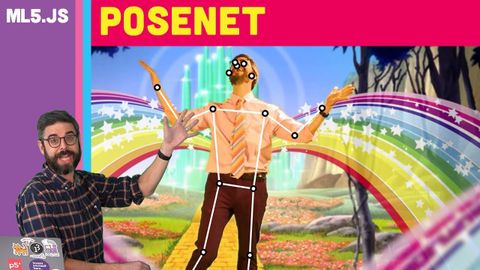ml5.js 用PoseNet進行姿態估計。 (ml5.js Pose Estimation with PoseNet)
 沒有此條件下的單字
沒有此條件下的單字US /ˈrek.əɡ.naɪz/
・
UK /ˈrek.əɡ.naɪz/
- v.t.認可;接受;賞識;承認;表彰;嘉獎;認出,認識
US /ˈmʌltəpəl/
・
UK /ˈmʌltɪpl/
- adj.多重的;多種的;多發性的;多重的
- n. (c.)多;多個的;乘數
- pron.多重的
US /ˈækjərɪt/
・
UK /ˈækjərət/
US /ˈkɑnfɪdəns/
・
UK /'kɒnfɪdəns/

